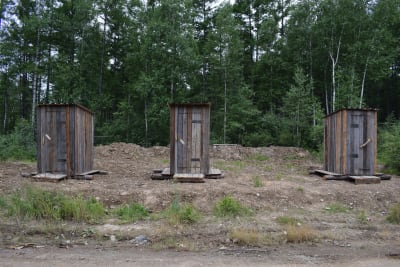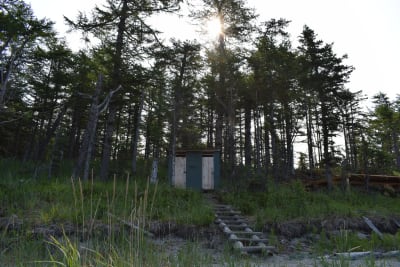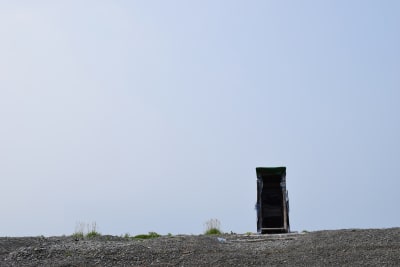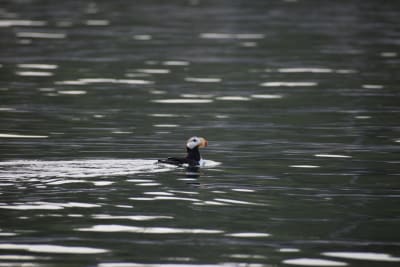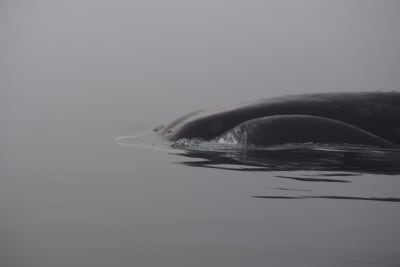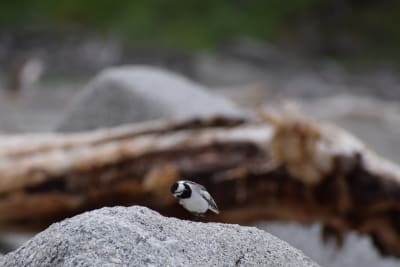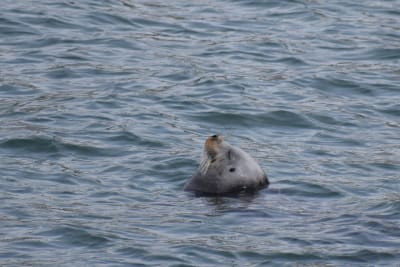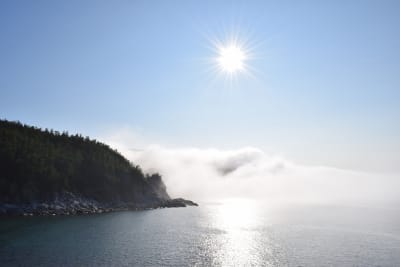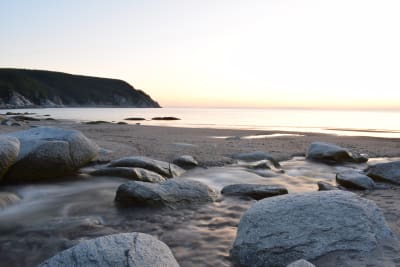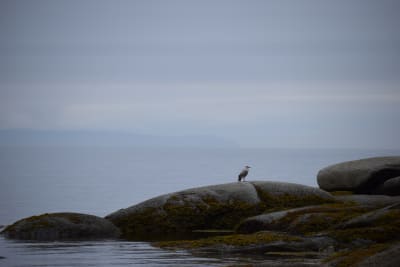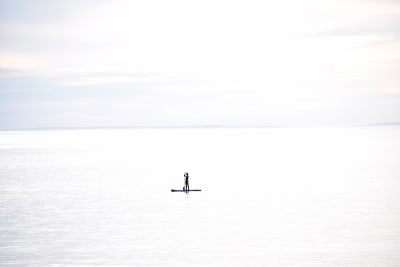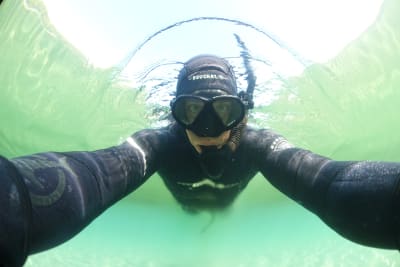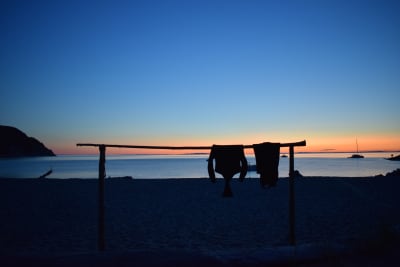In late July I took a trip to the Sea of Okhotsk to spend time with bowhead whales. The journey amounted to three days covering airplanes, paved roads, gravel roads, dirt roads, river ferries, and speed boats. To dive with the whales!
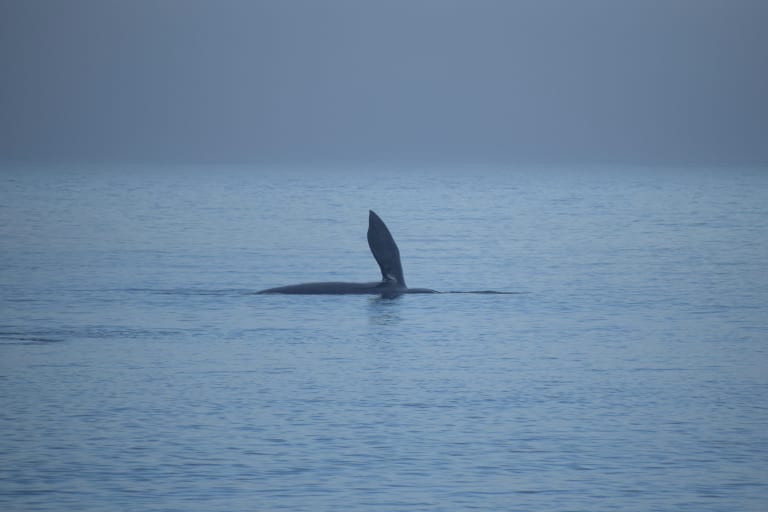
Our days on site consisted of free diving in near-freezing water, paddle-boarding and row-boating, rock scrambling, plentiful photography, and impromptu lectures on marine biology and evolution. All in the far reaches of the Sea of Okhotsk.
Would I recommend it? No.
Three reasons.
First reason, the bowheads were incredibly shy around humans. When approached, they'd noticeably avoid both watercraft and divers—much more so, divers in the water. Yes, at times they'd come close, but only in passing. They engaged almost never.
Interaction in the water stressed the whales.
While beautifully available for drone or zoom photography, underwater photos were not possible. So if your interest is diving with whales, this ain't the place (or species?).
The second reason is that the local site operators cared not
at all about this and continually dive-bombed
unaware
whales from paddle-boards to get underwater shots.
If you see an underwater photo of bowheads from this area, it's probably taken in this antagonistic way.
Watching this in action was depressing to say the least. However, I'd like to think you're not like this, and are respectful of marine life despite or in spite of the opportunistic behaviour of others. Would I recommend it with this off the table?
Still not. Third reason. You'll note I haven't mentioned the exact area of this adventure. This is not only for the whales' benefit in light of bad behaviour, but also for the abysmal site conditions and organisation. I've also omitted the names of many participants, as they might not want to be associated with the organisers.
It was, in short, a bloody mess. Do not believe anything local site operators tell you. In other words:
Anyway, let's sideline human cupidity for a moment and focus on the matter at hand: the whales and other members of their ecosystem. Our team benefited significantly from its several marine biologists and ecologists, who spent time giving presentations and explanations of the resident marine life.
The many photographers on staff and attending were also an invaluable source of learning!
bowhead whales
When I started this adventure, I knew little of this species beyond what Wikipedia could tell me. Which was scant, in terms of behaviour. I guess I now know why.
First, I should preface that in this section I only have my observations. I don't know what I'm talking about. There were incredibly competent scientists on site studying the whales: when their research is available, I'll post it here. These are just casual observations.
| ex ante |
When we arrive, a handful of whales have been in the bay. With poor visibility and conditions, it's hard to assess exactly how many. No attempts to engage them yet due to the weather. |
| days 3–4 |
Continual presence of a handful of whales. They have a reliable pattern of movement around the bay, spending a small amount of time above the water, most beneath. When approached in a SUP, they reliably swim away. No engagement otherwise: they avoid anything in the water. |
| day 5 |
Sudden arrival of more whales that at least trebles the population. Their numbers are halved by midday due (we surmise) to a boat cutting through their circuit across the bay. |
| days 6–7 |
Same behaviour as in the end of the previous day. At the end of day 7, lots of tail slapping. We later speculate as to whether this triggers the change in behaviour in the next days. Loud respiration following the tail-slapping as the whales begin spending more time above the waterline. |
| day 8 |
There appear to be more whales in the water (from the sound), but it's hard to tell due to weather conditions. Those seen are much more social in behaviour, even approaching watercraft. In the evening some orcas are spotted in the distance and the whales crowd the shallows. We verify that there are, indeed, many more than previously. |
| day 9 |
In morning, whales are still engaging, though still not to divers. Loud respiration throughout, as they spend plenty of time on the surface. At midday an an orca is sighted. At the same time, more tail-slapping. Following this, the whales revert to their original unsocial (to us) behaviour. |
| days 10–13 |
What few whales remain in the bay (fewer and fewer) continue to avoid watercraft, in general, though they at times will pass close by. |
We can't quite figure out what bracketed their social behaviour beyond the tail-slapping and orca encounter.
Even when in their more social behaviour, the whales avoided divers in the water (except for dive-bombers, of course). I did have some close encounters when diving on my own, but fewer than when in watercraft. It also took quite a long time resting still in 3° C water. Perhaps watercraft are more or less unknown and thus unremarkable, while submerged divers in black wetsuits can be construed as threatening.
gear
I wasn't prepared for this at all: conditions on site were far different from what we'd been told. But I was prepared for the diving, which ended up not being so useful; and for land photography, which was supremely useful.
For diving, I used a 7mm two-piece open cell wetsuit. I already use the 5mm for local free diving in winter, and figured the extra thickness might (might) do well in the cold. It did—I was able to dive for several hours at a stretch in 3–6° C waters without issue. I supplemented the suit with 7 mm three-finger gloves and 4 mm fin socks. I should have gone thicker with the socks, as my feet got cold quickly, but my longfins' foot pockets were too narrow.
For photography I brought a DSLR with two zoom lenses, 18–55mm and 70–300 mm. For what few underwater photos appear, I use my usual mirrorless in its underwater housing. This was a trip where a drone would have been incredibly useful. Or at least a more sophisticated (or longer) zoom lens.
photos
What follows is a day-by-day of our adventure—a
photo-journal.
It doesn't include travel into and from Russia, and
carefully omits place and person names to protect the
innocent
.
I begin our second day in Khabarovsk, when all members of the travelling party had been introduced.
